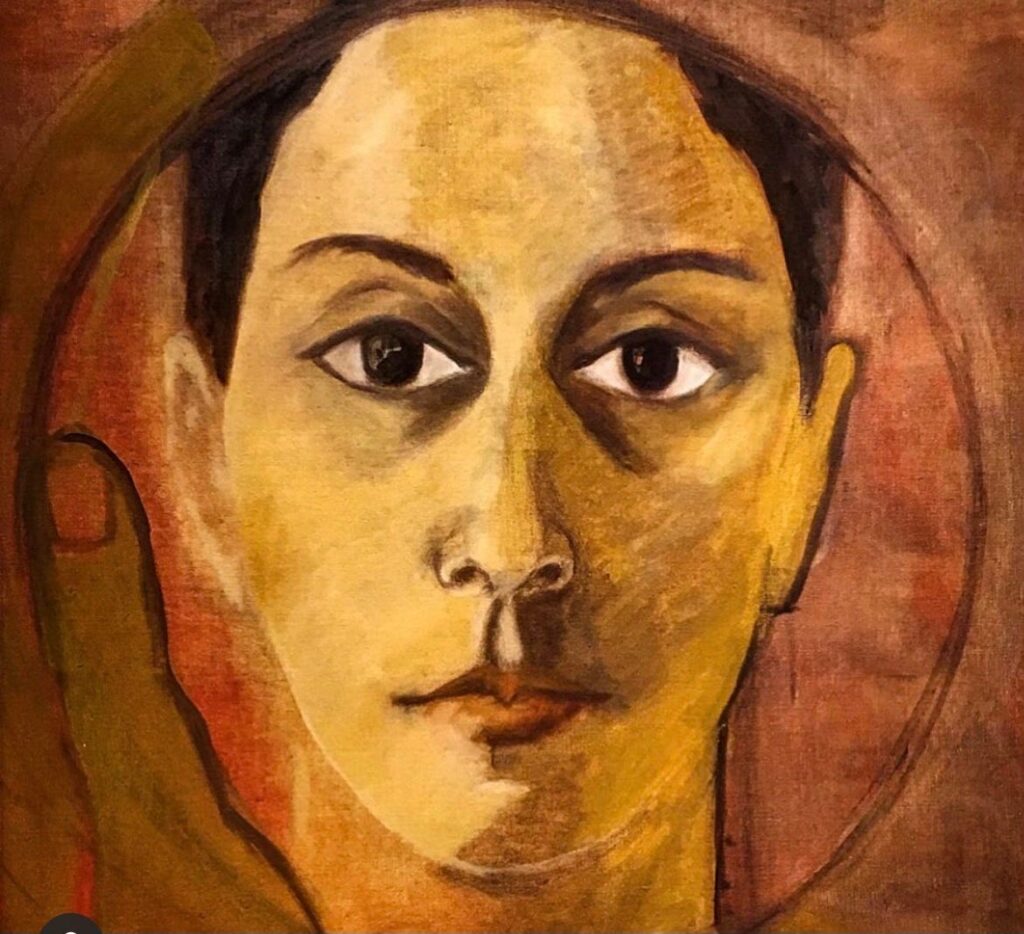Fights about representation in Hollywood are exhausting. But it’s the conversation we’ve always been having

Writing about identity, politics (note that strategic comma), and popular culture can be a scary business. Never has there been a period when more people have been exercised about entertainment, what it means, and how it reflects—or, more to the point, does not reflect— diverse, tempestuous humanity. Before skating further out onto thin ice, a disclaimer: If you are seeking a polemic, advancing one phalanx or another in America’s interminable culture wars, you won’t find it here. There are many allegiances in complex, tribal contemporary America, and all of us have multiple, overlapping, and sometimes conflicting identities. If you accept the premise that we go to the movies or watch TV hoping to see exalted versions of ourselves, it’s not surprising that we are perennially unhappy with the results.
Ethnic and racial identity, as it has been manufactured by Hollywood, is the perennial subject of dissertations and digital hot takes, a lightning rod for grievance, and the locus of backlash. These are inevitable battles, difficult though they may be. Americans are notorious amnesiacs, but scrapping about power, narrative, and representation— who gets to tell the story, who gets to star in it, who gets to interpret what it means to the rest of us — is our historical constant. Working through these thorny questions, over and over, is not revolutionary discourse, however novel it may seem to each generation who discovers these issues. It is our discourse.
But to specifics: By the time you read this, a month and many news cycles will have passed since the movie musical In the Heights was criticized for primarily casting lighter-skinned Latin actors in prominent roles. The delay in writing about it was deliberate; race is the third rail in every American conversation, and skin color is a pain point in communities the world over (more on that in a bit). Social media makes it easy to fly off, half-cocked on hard topics, but that doesn’t make it wise. In the Heights, which has made about $40 million at the box office while also streaming on HBOMax, was not the success hoped for. This has nothing to do with arguments about who was hired. It’s more likely about what large audiences tend to see at the movies—if they dare go to movies at all (currently it’s Black Widow). Still, the controversies around it have stayed with me, because they are personal—or rather, familial.
When the director John Chu (Crazy Rich Asians) showed me Heights footage about two years ago, I felt that powerful charge of connection that movies can still somehow give you. Most of my mother’s family came to this country from Venezuela, and, for a time, lived in Washington Heights (as an adult, I also lived in the neighborhood, not far from where Miranda, who was raised in upper Manhattan, still resides). My mother’s health was in terminal decline, and for obvious reasons, I related the climb of the people onscreen — from the cauldron of New York City toward something like the American mainstream — to her experiences. This was fantasy (the term projection is apt). My relatives who could even be very loosely connected to the events of Heights are one side of a typically complicated American family, and their experiences don’t neatly fit show business characterizations. Still, sitting in the director’s office, watching a vibrant, literally buoyant, dance number set at the Highbridge pool, a lump rose in my throat.
Due to peculiarities of time, place, and identity, I was moved, just as my paternal grandmother was moved by Fiddler on the Roof, though her own family history played out as far from a shtetl as one could travel. Like any human with a heart, I’m also routinely moved by stories to which I have no meaningful connection at all. That’s sort of the point of a transcendent art form. Still, it’s seductive to catch a phantom-like aspect of one’s self in mass media. The troubling power of screened entertainment is that we can’t help but want it to be a reflector and validator of actual experience. In faddish terms, being seen has become the ultimate exaltation of worth.
This is bound to cause trouble. In the Heights, delayed a year and the first big theatrical release of the summer, carried a heavy burden. It was not merely a big-budget movie based on Lin-Manuel Miranda’s Tony-winning musical, but an avowed celebration of the immigrant experience in a bleak time for immigrants. More specifically, it was promoted as a powerful evocation of a sort of ascendent Latino-ness. (Pan-ethnic descriptions of nearly 20 percent of the U.S. population are tricky. While the term “Latinx” is gaining currency, only about 3 percent of the people who fit that descriptor use it, according to Pew; the rest use terms more specific to countries of origin or the older terms Hispanic, or Latino/a, which my mother would have preferred.)
How one sees things, of course, is all a matter of vantage point. Social media criticism of the movie began as soon as the trailer appeared, and continued through its opening, with articles in the Root and a Washington Post op-ed. The thrust of these critiques—that there were few Afro-Latino actors outside of background scenes in a film set in predominately Dominican Washington Heights—became another spike in that long, jagged conversation about who gets to be seen. By June 15, Miranda had apologized; three days later Bill Maher had weighed in to say that apologizing was capitulating to bullies. Conservatives ridiculed the faculty lounge jargon in the Washington Post piece, while progressives countered that when it comes to casting, Hollywood has much to apologize for. Somewhere along the way, Rita Moreno defended Heights and also apologized for offending people by doing so. All of this sound and fury is what we’ve come to expect, and that makes it too easy to dismiss.
My initial reaction to this back-and-forth, of which I’m not proud, was an eye roll. Why on earth were people going after a film so obviously well-intentioned? Aren’t there far bigger fish to fry? How can anybody be mad at Lin-Manuel Miranda …of all people? That’s a consequence of being swamped by an immersive digital ecosystem powered by endless cycles of outrage and retribution. A nuanced discussion, let alone anything like resolution, is hardly the point of the algorithm, so why try? But, after everybody else moved on, I kept thinking about the movie, and about the vastly divergent identities and cultures of more than 60 million people who can trace their roots to more than 30 countries, who, in many cases, have ancestry in this hemisphere that stretches back long before there was the United States, and who no longer necessarily share Spanish as a first, second, or third language. That is one unwieldy census category. And, the more I thought about it, the more I saw my mother’s family.
Had my mother seen In the Heights, I can imagine her saying: Hey, some of these people don’t look Dominican. But what does looking Dominican even mean? That’s a complicated and contentious question for Dominicans, as diverse a group of people as any on the planet. In the Dominican Republic, and most countries in Latin America that were colonized by Europeans, racial identity has correlated strongly with who has power. Most Dominicans fall somewhere in the middle of a broad spectrum of racial types. Like a lot of communities, they do not fit neatly into that venerable and untenable American Black/White paradigm, but discrimination based on skin tone is real. I know many people with roots in Latin America and the Caribbean who love West Side Story, but nobody disputes that in Latin cultures, leading roles, of any kind, have typically gone to European-looking people. All of this goes a little deeper than Natalie Wood playing the Puerto Rican Maria, and as Miranda himself acknowledged, critics of his movie were not wrong to point it out.
My mother would have recognized these fault lines, because in many ways her people lived between polarities, and ranked themselves accordingly. All histories are riddled with secrets and distortions, but arguably, one sad theme in my mother’s family story is a kind of flight from brownness. According to lore, my maternal grandmother’s first marriage, to a man assumed to have indigenous blood, was initially blocked by her family; her last, to a Spaniard with blue eyes nicknamed El Alemàn (the German), was praised. Some family tales betray how attractiveness correlated with fairness and ugliness with darker skin. Love, in a group of people who came in many different shades, was not evenly distributed. To look Spanish was to be beautiful; to look like an Indio, the opposite. The ability to assimilate—to be an American success—was tied to appearance. Many people who come from Hispanic or Latino backgrounds have these stories. The attitudes of these relatives toward skin color were deeply ingrained, one twisted thread in an American quilt. So-called colorism is not some diabolical quirk of Latin Americans, but a corrosive cross-cultural phenomenon.
The outrage cycles of our immersive digital ecosystem are so enervating and destructive that the truth in any argument can get lost as combatants rush to the barricades. Still, I’m quaintly attached to the notion that all of us should be more, not less, engaged in the big questions of the day, and that people are capable of nuanced thought, at least when given a polite nudge. Among Latinos and anyone else who paid attention to Heights, there is a glorious variety of opinions. Art (even if the art in question is being cranked out at great expense by a major movie studio) should provoke debate, and questions of representation are perennial in a heterogeneous democracy. We cannot remain an open society if we are not prepared for such clashes. Like it or not, we must find a way of living with other people with whom we disagree, to the point of wishing they would just evaporate.
My mother was a political progressive and spent much of her career working on diversity issues. She was no fan of Hollywood’s ay chihuahua/cuchi-cuchi portrayals of Hispanics, and while she was fine with Rita Moreno, she loathed West Side Story. I believe she would have liked In the Heights, which is delightful in many ways, and well-meaning in its effort to capture a portion of an extremely diverse, divided community. But from early childhood, the one thing she praised me consistently for was a mundane fact over which I had absolutely no control: I had inherited blue eyes. We all have our blind spots and should learn from them. That’s part of the story, too.
